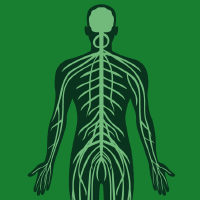Topic Editors


Translational Advances in Neurodegenerative Dementias

Topic Information
Dear Colleagues,
Neurodegenerative dementias are a heterogeneous group of chronic diseases that are characterized by progressive and inexorable cognitive decline, leading to loss of autonomy and, ultimately, death. The number of affected patients is constantly increasing, with catastrophic social, health, economic and welfare consequences. Despite significant efforts and investments, their pathophysiology is still largely obscure and there are currently no available therapies. Moreover, the diagnosis and the ability to predict the disease course still represents a challenge, particularly due to their extreme phenotypic variability. Thus, it is crucial to gather further evidence on the pathophysiological mechanisms involved in their onset and progression, in order to improve diagnostic possibilities and develop new therapeutic options. Recently, remarkable discoveries have been made through research in, for example, genetics, neuropathology, neurophysiology and neuroimaging. Non-invasive brain stimulation techniques (NIBS), in particular, have shown great promise both as diagnostic tools, as a means to better characterize alterations in circuits and rhythms in the affected brain, and as therapeutic options. This Topic aims to bring together, both through original research and reviews, the best and most recent evidence in this vast and complex field, in order to provide an up-to-date view of the research in the field and to promote further developments.
Dr. Francesco Di Lorenzo
Dr. Annibale Antonioni
Topic Editors
Keywords
- neurodegenerative diseases
- Alzheimer's disease (AD)
- fronto-temporal dementia (FTD)
- Lewy body dementia (LBD)
- prion diseases
- non-invasive brain stimulation techniques (NIBS)
- biomarkers of neurodegeneration
- pathophysiology of neurodegeneration
- innovative therapies in neurodegenerative dementias
- recent discoveries in the genetics of neurodegenerative dementias
Participating Journals
| Journal Name | Impact Factor | CiteScore | Launched Year | First Decision (median) | APC | |
|---|---|---|---|---|---|---|

Biomedicines
|
4.7 | 3.7 | 2013 | 15.4 Days | CHF 2600 | Submit |

Brain Sciences
|
3.3 | 3.9 | 2011 | 15.6 Days | CHF 2200 | Submit |

Geriatrics
|
2.3 | 2.7 | 2016 | 22.4 Days | CHF 1800 | Submit |

Life
|
3.2 | 2.7 | 2011 | 17.5 Days | CHF 2600 | Submit |

Neurology International
|
3.0 | 2.2 | 2009 | 23.3 Days | CHF 1600 | Submit |

MDPI Topics is cooperating with Preprints.org and has built a direct connection between MDPI journals and Preprints.org. Authors are encouraged to enjoy the benefits by posting a preprint at Preprints.org prior to publication:
- Immediately share your ideas ahead of publication and establish your research priority;
- Protect your idea from being stolen with this time-stamped preprint article;
- Enhance the exposure and impact of your research;
- Receive feedback from your peers in advance;
- Have it indexed in Web of Science (Preprint Citation Index), Google Scholar, Crossref, SHARE, PrePubMed, Scilit and Europe PMC.

